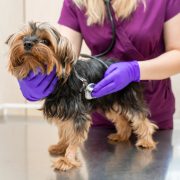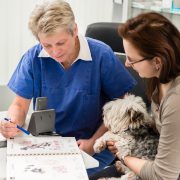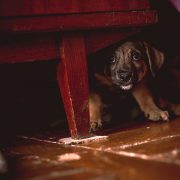Susceptibility of Raccoon Dogs for experimental SARS-CoV-2 infection
Susceptibility of raccoon dogs for experimental SARS-CoV-2 infection
Pubished 22 March 2021
Freuling, C.M. et al (2020) Susceptibility of Raccoon Dogs for experimental SARS-CoV-2 infection. Emerging Infectious Diseases, 26 (12), pp. 2982-2985. https://dx.doi.org/10.3201/eid2612.203733
This is a small experimental study looking at susceptibility to SARS-CoV-2 infection in Racoon dogs (Nyctereutes procyonoides).
Nine naive raccoon dogs were inoculated intranasally with SARS-CoV-2 and a further three naive animals were introduced 24 hours after inoculation to test for direct transmission. Animals were individually caged, separated by wire mesh with a naive contact animal between two inoculated animals. There was also one group where the naïve contact was placed between two naive ‘controls’.
To monitor viral shedding nasal, oropharyngeal, and rectal swab samples were collected on days 2, 4, 8, 12, 16, 21, and 28. Viral RNA was measured by quantitative reverse transcription PCR and the levels of infectious virus by titration on Vero E6 cells. Viral shedding was observed in nasal and oropharyngeal swab samples on days 2–4 in six (66.7%) of nine inoculated animals and in two (66.7%) of three contact animals. Viral RNA was found in the nasal swab from one animal until day 16.
Although three animals were slightly lethargic 4 days after inoculation, none of the exposed or contact animals had fever, weight loss, or other signs of clinical infection.
Animals were euthanised on days 4, 8, 12, and 28.
Tissues and body fluids were tested for SARS-CoV-2 RNA and replicating virus. Significant viral loads were detected in the nasal mucosa on day 4 and infectious virus was cultivated from the nasal conchae of two animals. None of the lung samples tested positive for viral RNA.
Histopathology revealed mild rhinitis affecting the respiratory and olfactory regions in all infected animals euthanised on days 4, 8, and 12, but the authors report that they did not find gross lesions definitively caused by SARS-CoV-2 infection.
Serum samples taken on days 4, 8, 12, 16, 21, and 28 were tested samples for antibodies against SARS-CoV-2 using the indirect immunofluorescence assay and virus neutralization test revealing neutralizing antibodies in two of the infected animals as early as day 8. SARS-CoV-2–specific antibodies were detected by immunofluorescence in four (57.1%) of seven inoculated animals on day 8 using ELISA.
Characterization of SARS-CoV-2–specific immunoglobulins, revealed that IgM, IgG, and IgA developed within 8 days after infection; IgM levels peaked on day 8 and IgG on day 12. On days 8 and 12, antibodies specific for the receptor-binding domain of SARS-CoV-2 in saliva samples from animals that developed serum were also detected.
The authors conclude from the study that raccoon dogs are susceptible to SARS-CoV-2 infection and can transmit the virus to direct in-contact animals. While evidence was found of viral replication and tissue lesions in the nasal conchae infected animals had no signs of illness.






Leave a Reply
Want to join the discussion?Feel free to contribute!